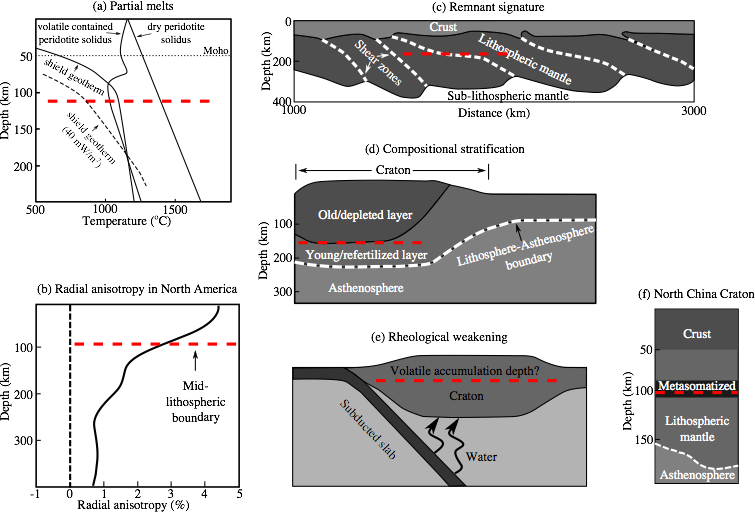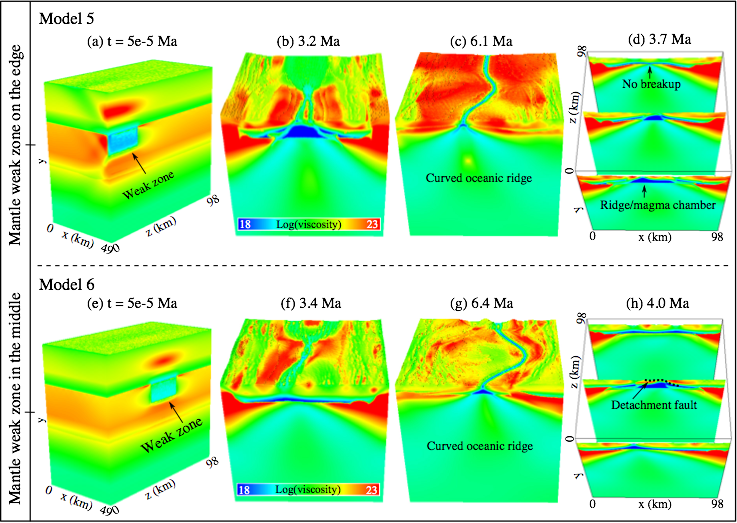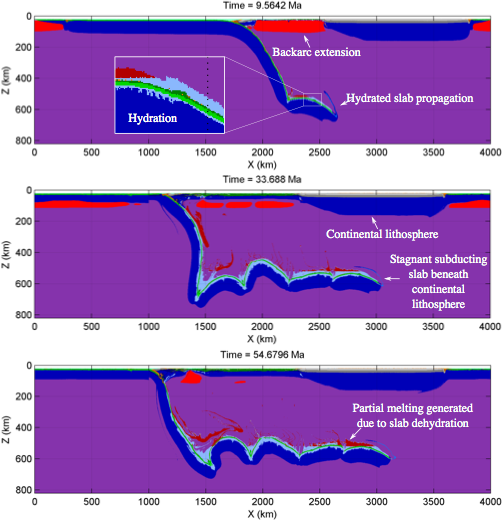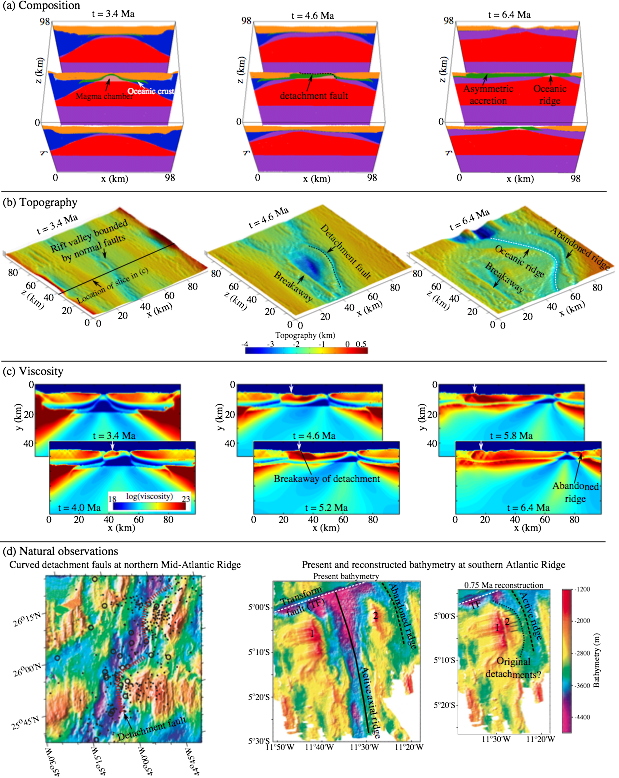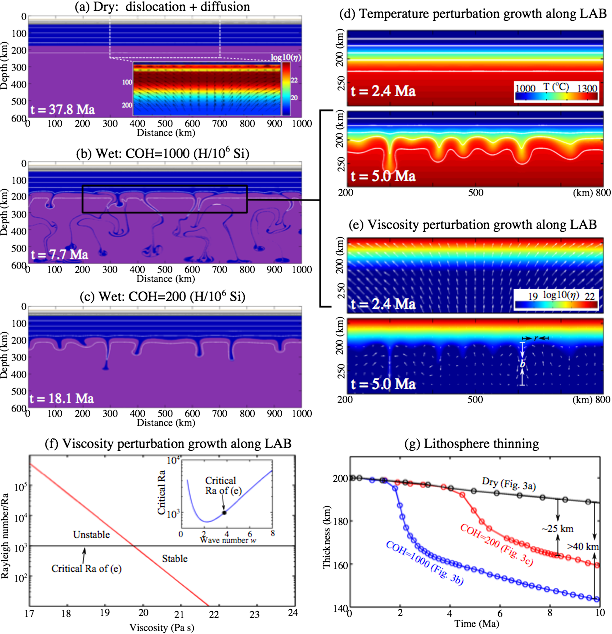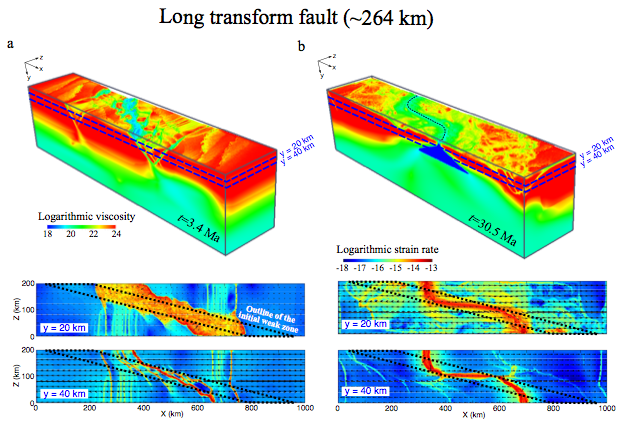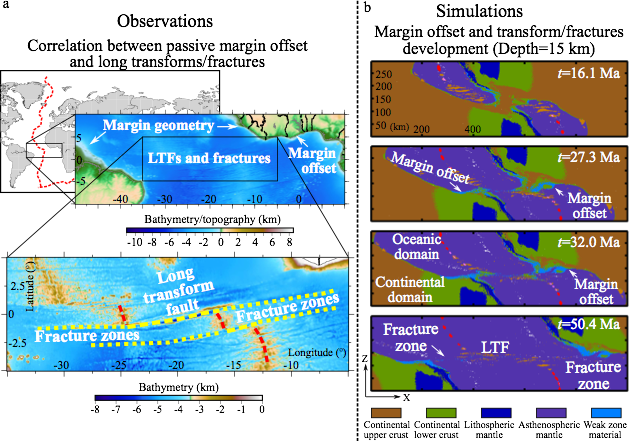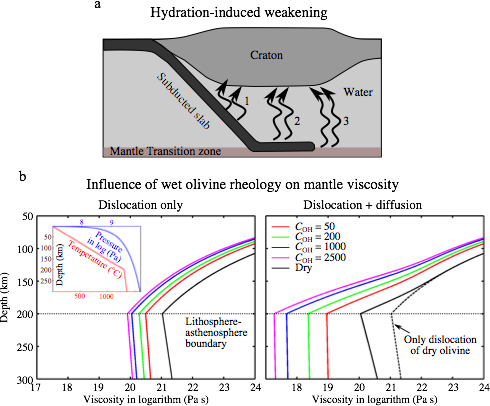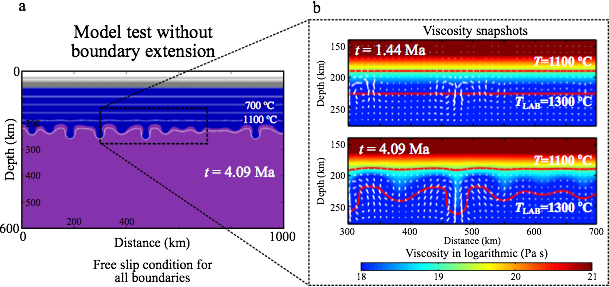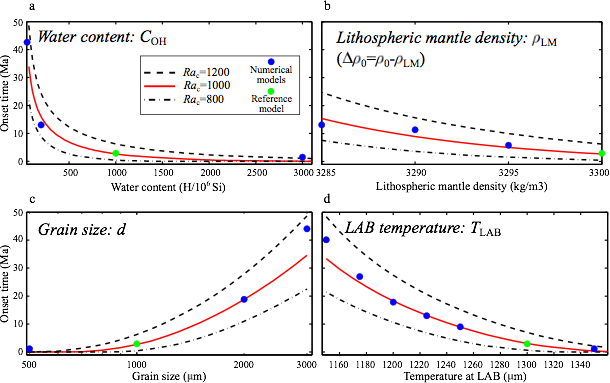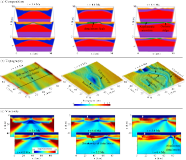Topic 2: Continental rifting to seafloor spreading via 3D numerical modeling.
Continental rifting to seafloor spreading is a continuous process. Early rifting history influences the following spreading process, but rifting inheritance in spreading remains enigmatic. Using 3D thermo-mechanical coupled viscso-plastic numerical models, we investigate the complete extension process and the inheritance of continental rifting in oceanic spreading. Our modeling results show that the initial continental lithospheric coupling/decoupling affects oceanic spreading in two manners: (1) coupled model (a strong lower crust mechanically couples upper crust and upper mantle lithosphere) generates large lithospheric shear zones and fast rifting, which promotes symmetric oceanic accretion and leads to a relatively straight oceanic ridge, while (2) decoupled model (a weak ductile lower crust mechanically decouples upper crust and upper mantle lithosphere) generates separate crustal and mantle shear zones and favors asymmetric oceanic accretion involving development of active detachment faults with 3D features. (See more results in Liao & Gerya, 2015, GR).


